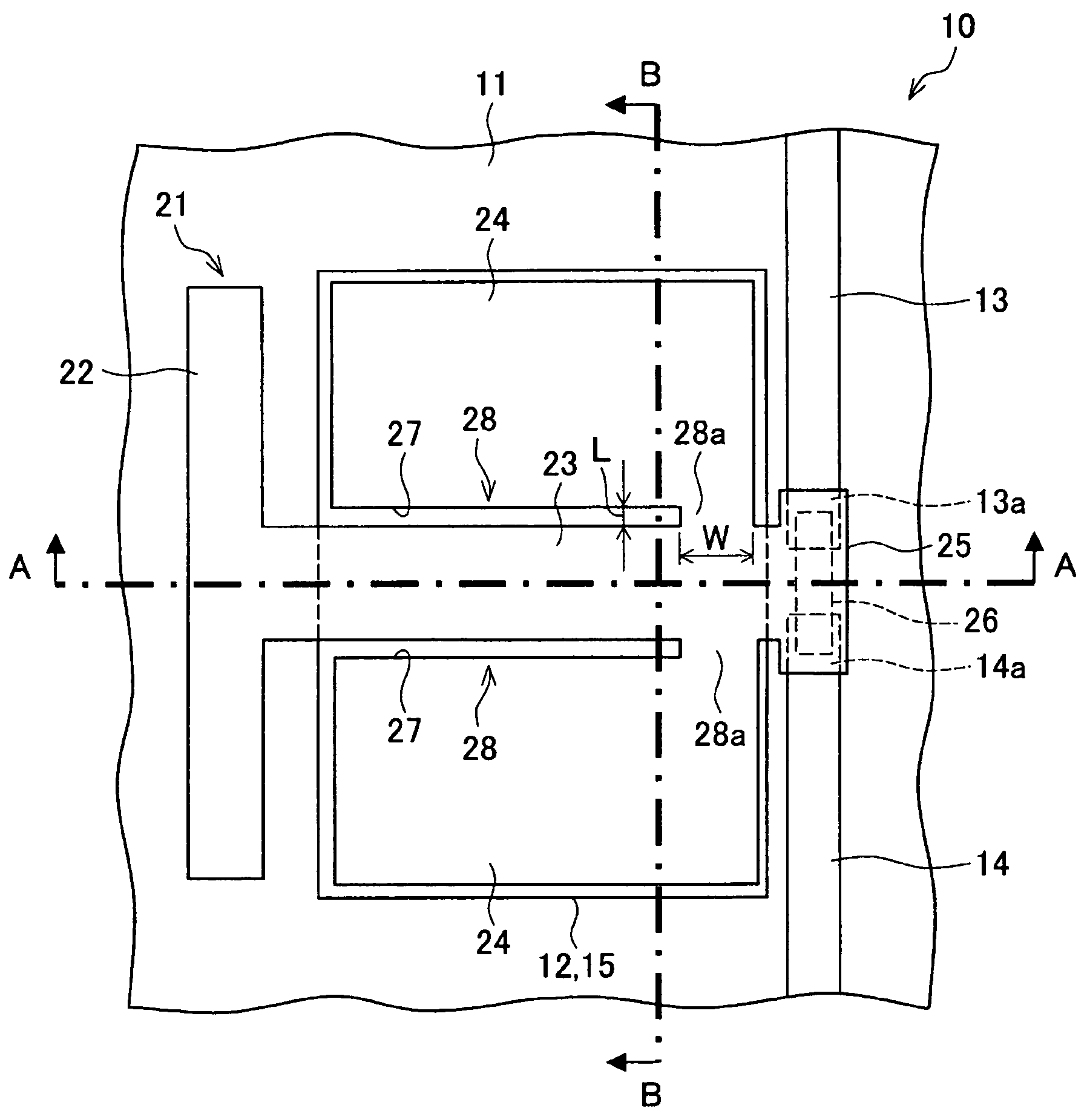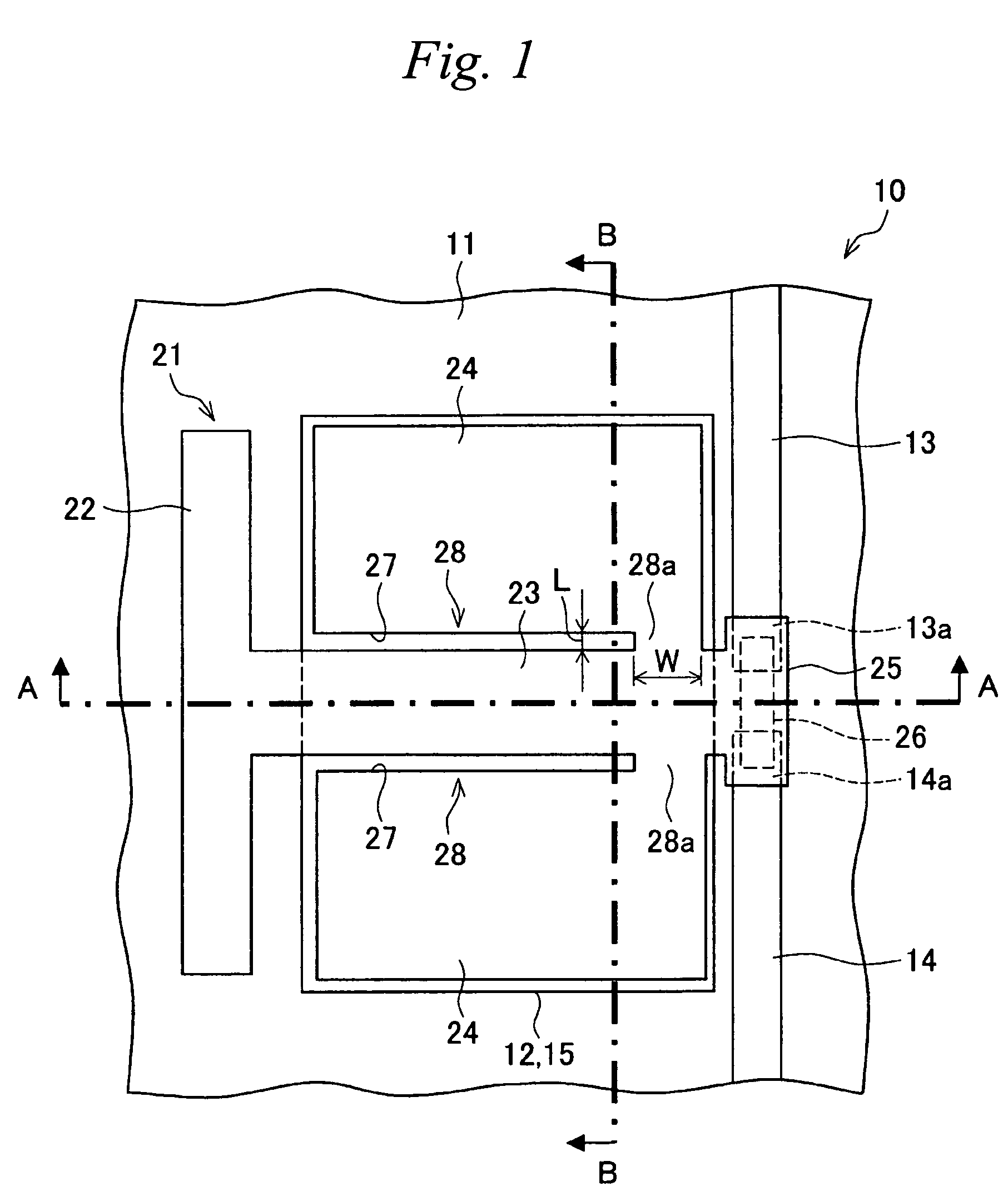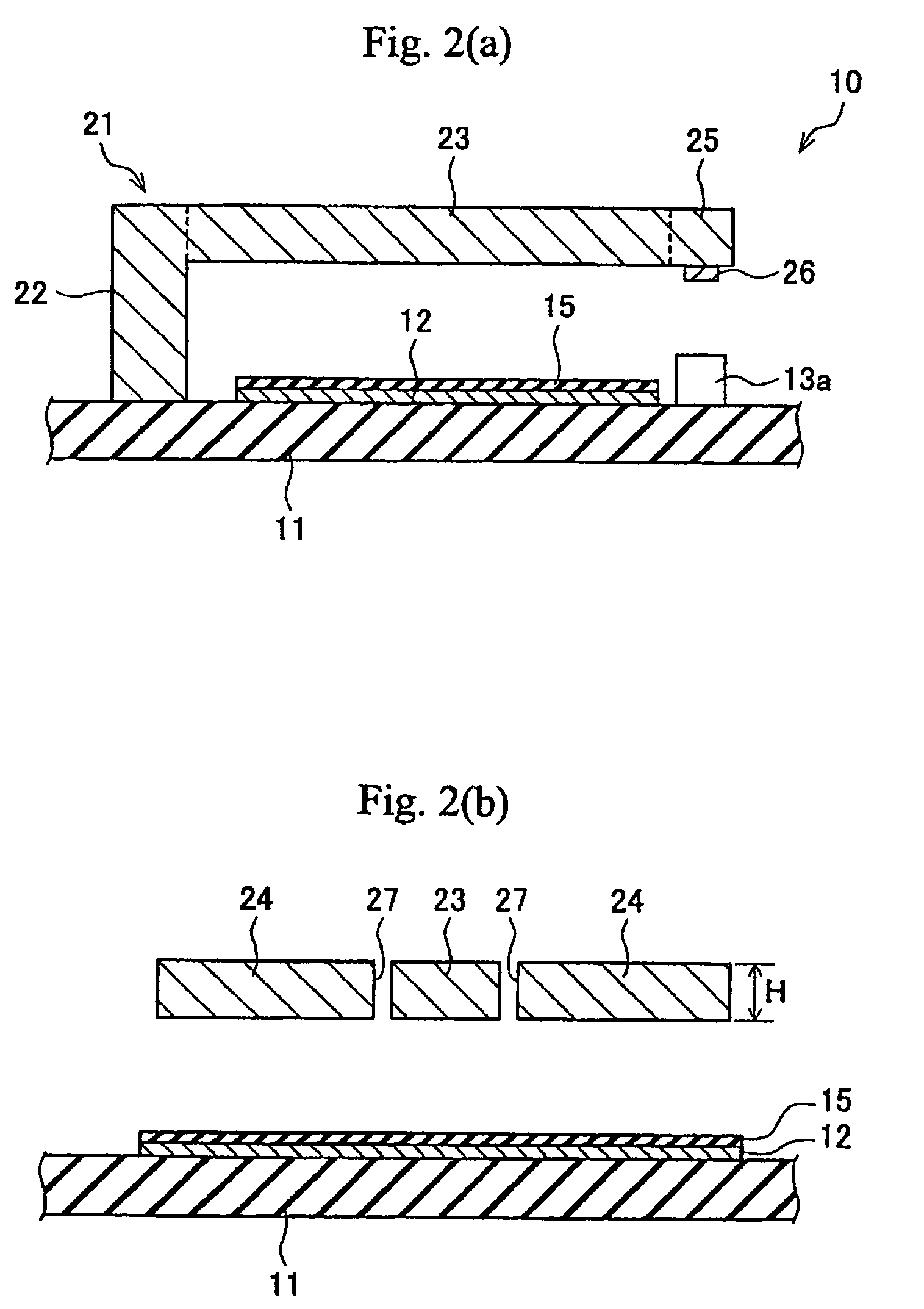Micro electromechanical switch and method of manufacturing the same
a micro electromechanical switch and electrostatic attraction technology, applied in relays, door/window fittings, wing accessories, etc., can solve the problems of further miniaturization and counter-trends in the direction of lower voltage, and achieve the effect of improving contact force, reducing applied voltage, and increasing the displacement of the movable electrode by electrostatic attraction
- Summary
- Abstract
- Description
- Claims
- Application Information
AI Technical Summary
Benefits of technology
Problems solved by technology
Method used
Image
Examples
embodiment 1
[0082]An exemplary embodiment of the present invention will be explained with reference to FIGS. 1-5. FIG. 1 shows schematically a micro electromechanical relay (micro electromechanical switch) according to the present embodiment. The micro electromechanical relay 10 comprises a base 11 and an actuator 21 that is partially affixed to an upper face of the base at a portion and separated from the base 11 at the other portion. An element that is the same is designated by the same reference. These figures may emphasize specific parts for understanding of the invention. Thus, the various of dimensions of the micro electromechanical relay 10 shown in these figures are not restricted to reflecting the various of dimensions of an actual micro electromechanical relay 10.
[0083]The base 11 is formed from a glass substrate such as Pyrex (Trademark). Upon the upper face of the base 11, a pair of signal lines 13 and 14 and a fixed electrode 12 are formed from a conductor such as gold, copper, or ...
working example 1
[0103]A specific example of the micro electromechanical relay 10 of the present embodiment will be explained while referring to FIGS. 6-9. In this example, a longitudinal direction of the beam portion 23 is referred to as the lengthwise direction, and a narrow direction perpendicular to the lengthwise direction is referred to as the width direction. In the micro electromechanical relay 10 according to the present working example, the base 11 is formed from a glass substrate, and the fixed electrode 12 and the signal lines 13 and 14 are formed from Au. The actuator 21 is formed from a silicon semiconductor substrate, and the movable contact 26 is formed from Au.
[0104]In addition, the various dimensions of the micro electromechanical relay 10 are described below. Specifically, a length of the beam portion 23 is 450 μm, and a width is 120 μm. Further, the movable electrode 24 is 410 μm long and 500 μm wide. Furthermore, the contact part 28 has the same length (410 μm) as the movable el...
embodiment 2
[0114]Another embodiment of the present invention will be explained with reference to FIG. 10. The micro electromechanical relay 10 according to the present embodiment differs from the micro electromechanical relay 10 shown in FIG. 1 in that a fixed electrode 12 is disposed on either side of the signal lines 13 and 14; and also the supporting portion 22, the beam portion 23, the movable electrode 24, and the connecting part 28 are disposed on either side of the movable contact portion 28; while the composition is similar otherwise. Elements having the same function as those explained for the above-mentioned embodiment are designated by the same references, and further explanation of such elements will be omitted.
[0115]FIG. 10 shows schematically the micro electromechanical relay 10 of the present embodiment. The illustrated actuator 21 supports the movable contact portion 25 from both sides and thus is called a “double-support type actuator.”
[0116]The micro electromechanical relay 1...
PUM
 Login to View More
Login to View More Abstract
Description
Claims
Application Information
 Login to View More
Login to View More - R&D
- Intellectual Property
- Life Sciences
- Materials
- Tech Scout
- Unparalleled Data Quality
- Higher Quality Content
- 60% Fewer Hallucinations
Browse by: Latest US Patents, China's latest patents, Technical Efficacy Thesaurus, Application Domain, Technology Topic, Popular Technical Reports.
© 2025 PatSnap. All rights reserved.Legal|Privacy policy|Modern Slavery Act Transparency Statement|Sitemap|About US| Contact US: help@patsnap.com



